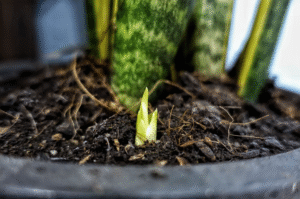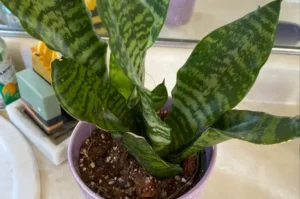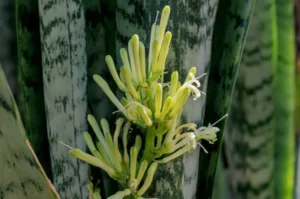Snake plants (also called Dracaena trifasciata, previously Sansevieria) are well-loved indoor plants known for being tough, attractive, and low-maintenance. But what happens when they get too big for their pot, or you notice something unusual below the soil? One common question plant owners ask is: Can you cut the roots of a snake plant? Yes, you can but it’s important to do it properly to avoid harming the plant.
This guide will walk you through the reasons for root trimming, how to do it safely, and what to expect afterward.
Why Cut Snake Plant Roots?
Snake plant roots don’t need trimming often, but here are a few reasons why it might become necessary:
1. To Remove Rotten Roots
Overwatering can lead to root rot, which causes the roots to turn black, mushy, and smelly. If this happens, you’ll need to remove the damaged parts to stop the rot from spreading.
2. When the Plant Is Root-Bound
If your snake plant hasn’t been repotted in years, its roots may grow in circles and fill the entire pot. This limits water and nutrient absorption. Trimming the roots allows the plant to grow more freely after replanting.
3. To Divide the Plant
Snake plants can be propagated by dividing the root system. Cutting the roots lets you split one large plant into several smaller ones.
4. To Control Growth
If your snake plant is outgrowing its space and you don’t want it to get larger, trimming the roots can help control its size without affecting its overall health.
How to Trim Snake Plant Roots Correctly
Cutting the roots of a snake plant is simple if done with care. Here are the steps to follow:
Step 1: Take the Plant Out of the Pot
Hold the base of the plant gently and slide it out of its pot. You may need to tap the sides or loosen the soil first.
Step 2: Remove Extra Soil
Brush off the soil from the roots so you can see what you’re working with.
Step 3: Examine the Roots
Healthy roots are firm and pale-colored. Rotten roots look dark and feel soft or mushy. Identify the parts that need cutting.
Step 4: Use Clean Tools
Use sharp scissors or pruning shears. Clean them with rubbing alcohol before and after use to avoid spreading bacteria or fungus.
Step 5: Cut Only What’s Necessary
Remove dead, damaged, or overly long roots. Try not to cut more than one-third of the entire root system.
Step 6: Let the Roots Air Out
Before replanting, let the roots dry for a few hours. This helps prevent rot, especially after trimming.
Step 7: Repot with Fresh Soil
Place the plant in a clean pot with good drainage. Use a cactus or succulent mix to allow water to drain quickly and avoid future rot.
What to Expect After Trimming Snake Plant Roots
After trimming, the plant may appear unchanged for a short time, but it’s busy adjusting beneath the soil. New root growth will begin within a few weeks, and the plant will soon return to healthy growth. Sometimes, trimming even helps the plant absorb nutrients more efficiently and grow stronger over time.
Helpful Tips for a Healthy Recovery
- Avoid overwatering right after repotting. Let the soil dry out slightly between waterings.
- Use a well-draining potting mix to avoid future root rot.
- Place the plant in bright, indirect light while it recovers.
- Avoid using fertilizer until the plant shows signs of new growth, usually after a few weeks.
- Do not trim roots in winter, as snake plants grow best during spring and summer.
Conclusion
Cutting the roots of a snake plant is safe and often helpful when done the right way. Whether you’re rescuing it from rot, giving it more room to grow, or making new plants through division, root trimming can keep your snake plant thriving. Always use clean tools, handle the roots with care, and allow the plant time to recover. With the proper technique, your snake plant will stay healthy and beautiful for years to come.






